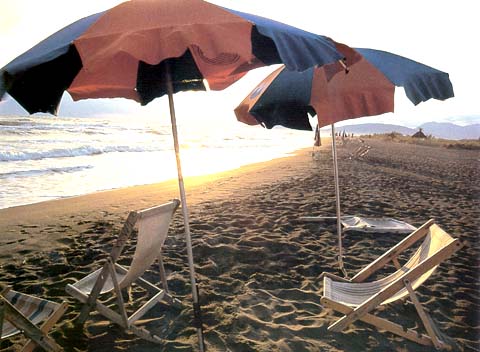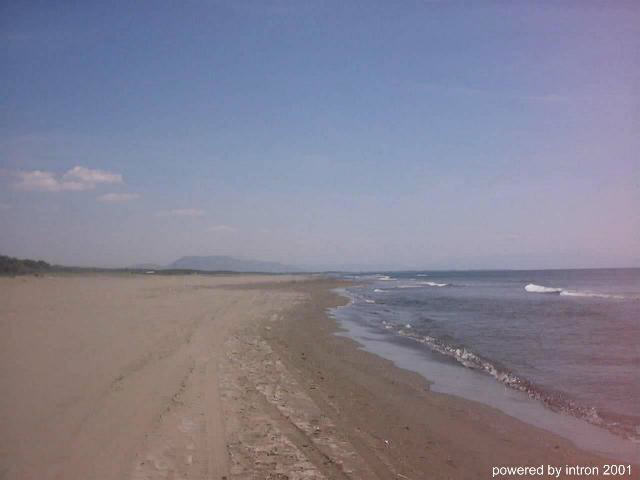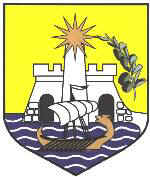|
|
||||||||||||||||||||||||||||||||||||||||||||||||||||||||||||||||||||||||||||||
|
Velika plaza
Velika
plaza, as one of the largest seashore locations in the Adriatic region,
offers a unique opportunity for the tourism development. Velika plaža is
located in the southernmost part of Montenegro, between the town of Ulcinj
and the nature reserve and resort of Ada Bojana. The Bojana River,
navigable in its total length, connects Velika plaza with Skadar Lake, one
of the largest lakes in Europe and an important bird habitat designated as
a Ramsar Site. Velika plaža, with 13 km in length and 60-100 m wide, is an
exceptional site on the eastern Adriatic coast offering a unique
opportunity for the development of an exclusive large scale resort of
great natural Maximum air temperature has average monthly maximum values in the warmest months (July and August) around 29°C, and in the coldest months (January and February) it is around 11-12°C. The frequency of maximum temperatures shows that the concentration of highest daily temperatures is in August. Minimum air temperature in winter months has average value around 5°C, and in summer months it is around 21°C. The average monthly air temperatures show a very regular pattern with maximum during July-August and minimum during January-February. The annual oscillation is on the average around 17°C. The average temperature is never bellow 5°C. The average monthly temperature above 10°C begins rather early, in March already, and ends in December, i.e. the period with active temperatures lasts from March till November. The average monthly air temperature for Ulcinj is 15.8°C.
Extreme monthly air temperatures
show significant variation. The absolutely highest values
of temperatures during the winter period are around 17°C, and extremely
low around 0°C, while in the summer the extremely high temperatures are
around 34°C, and extremely low around 17°C.
Summer days, when the
highest daily temperature reaches 25°C or more, in the area of
Tropical days, when the
highest daily temperature reaches 30°C or more, in the area of Wintry days, when the lowest temperature during 24 hours is bellow 0°C, in the area of Ulcinj, there are around 9 during the year. The occurrence of these days is typical for months December, January and February, and rarely March.
The characteristics of general precipitation regime
on the Montenegrin coast, are the Wind, as
the element of climate, at certain stations (for the period 1981-1995)
shows different values of the frequency of directions and velocity, as
well as the occurrence of calms. The frequency of occurrence for the
Seaside in general characterize, as dominant, the winds from north-east
and south-west, while in certain stations some specific characteristics
are identified. The following is characteristic for Ulcinj: northeast
(16.8%), east (16.3%), eastnortheast (11.6%), west (8%), west-southwest
(7.7%), and north-northeast (7.4%), and only 3.9% of calm. The extreme annual wind blows at the Seaside have average speed of 33 m/s (120 km/h), and in Ulcinj 20 m/s (72 km/h) +/- 5.38 m/s.
Relative air humidity shows
a very stable pattern throughout the year. The maximum of The values of average annual relative air humidity for Ulcinj are 65.9% (min 61.5% in July, max 69.3% in May). The
increased values of cloudiness are characteristic of winter part of the
year, contrary to the summer when these values are low. At the Seaside,
during the year, at average there are 42 percent (42%) of the sky is
covered with clouds. The cloudiness in the summer is lower than the
average annual for about 40%. On the
average, the Seaside has around 2455 hours of sunny days,
of which 931 hours in summer months (June, July and August), i.e. around
40%of annual sunny days belongs to one quarter of the year. In winter the
sunny days is significantly reduced. During January the Seaside has only
125 hours, which is 5% of the annual value. Daily, during the entire year
the Seaside has on the average around 7 hours of sun shine, with daily
oscillations from +/- 3.5 hours.
Hydrographic characteristics The sea currents along the Montenegrin seaside are under immediate impact of the currents in the south Adriatic, whose greatest speeds range from 42 (incoming current) to 88 cm/s (outgoing current, along Italian coastline) and up to six times greater than the ones in other parts of the Adriatic Sea. The main surface current moves from southeast towards northwest with speed of 42 cm/s following the sea coastline from the strait of Otranto towards the northern part of the Adriatic. The
salinity of sea water varies. The values of 29.70%, and lower, were
registered in the The average annual sea temperature is 17.1°C. The average monthly value for Ulcinj is 17.6°C. The average monthly values with temperature higher than 20.1°C occur in the period June-October (max 25.8°C in August). The average daily sea temperatures show very stable values. On the entire Seaside, on 20% of days per annum the temperature is bellow 16.5°C; 50% of the days bellow 17.9°C; 90% of days bellow 20.1°C; while only on 10% days, the temperature exceeds 20.1°C (on 40% days the temperature is between 17.9°C and 20.1°C). The direction of wave movement on the Montenegrin seashore is defined on the basis of registered frequency in certain stations, with the exemption of occurrences when the sea is without waves (calm). From the available information, the sea without waves is (not) registered in the station Ulcinj. The evident frequency of wave movement at station Ulcinj has east (41.5%), south (28.8%), then southwest and west direction (12.7%, i.e. 12.5%). The waves are more frequent in the winter, as follows: from the north (January, February, March), and south (November). The most frequent are waves high 0.5 to 1.5 (59-71%), while there is less frequency of high waves over 1.5 m (6-8%), mainly after long-lasting winds and from southern direction, and waves over 4.5% are the most rare (0.1%). The condition of the sea surface is described according to international grading from 0 to 9. Gradation calm smooth sea (0) in Ulcinj actually never occurs; mild waves (2) occur in 66.9% of cases, and slightly wavy (3) 16.0%. The frequency of other conditions of sea surface (4-7) is far less occurring, while the extreme situations, when the sea is very heavy (8) or extremely very heavy (9) are very rare cases. |
|
||||||||||||||||||||||||||||||||||||||||||||||||||||||||||||||||||||||||||||
|
|
||||||||||||||||||||||||||||||||||||||||||||||||||||||||||||||||||||||||||||||










